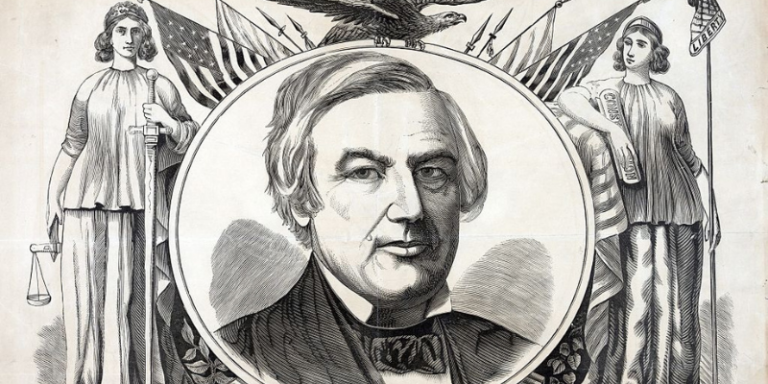Millard Fillmore: The Last Whig President
Fillmore was the last president to not be either a Republican or a Democrat.
By: Kelli Ballard | January 3, 2020 | 382 Words

(Photo by: Photo12/Universal Images Group via Getty Images)
Millard Fillmore (1800 – 1874) was the 13th president of the United States and the last to hold office that was not to be affiliated with either the Democratic or Republican parties. In 1828, Fillmore began his political career as a member of the Democratic and Libertarian Anti-Masonic Movement and Anti-Masonic Party. In 1834, he transferred over to the Whig Party and became recognized as an outstanding leader of the party’s northern wing.

In 1848, at the national Whig convention, Mexican War hero Zachary Taylor was nominated as president with Fillmore on the ticket as vice. Taylor was adamant about ending slavery, but his term was cut short when he died just months into his presidency. Fillmore became chief executive in 1850 after the president’s death.
Because the Whig Party had such success at the polls, Fillmore thought a new national party was rising and that they would be able to find a middle ground in terms of slavery. Clay’s Compromise of 1850 was an attempt to appease both the North and the South while finding a way to preserve the Union. The legislation was passed just two months after Taylor’s death and Fillmore strayed from the former president’s desire to end slavery by signing the Fugitive Slave Act of 1850, a provision that required the federal government to aid in the capture and return of runaway slaves to their owners. He publicly announced that, if necessary, he would call upon the military to aid in the enforcement.

(Photo by: Universal History Archive/Universal Images Group via Getty Images)
While this somewhat appeased the Southerners and was partially responsible for delaying the Civil War for another decade, the move destroyed Fillmore’s political career because of the extreme unpopularity with the North over his support and actions towards the institution of slavery.
In 1852, Fillmore decided to run again for president. He was one of three candidates of the Whig Party in its last national election, which it lost. He tried again in 1856, this time as the candidate of the Know-Nothing Party, also known as the American Party. He finished in third behind Democrat James Buchanan and Republican John C. Fremont. Fillmore retired to Buffalo after the loss and became a leader in the city’s civic and cultural life.
















